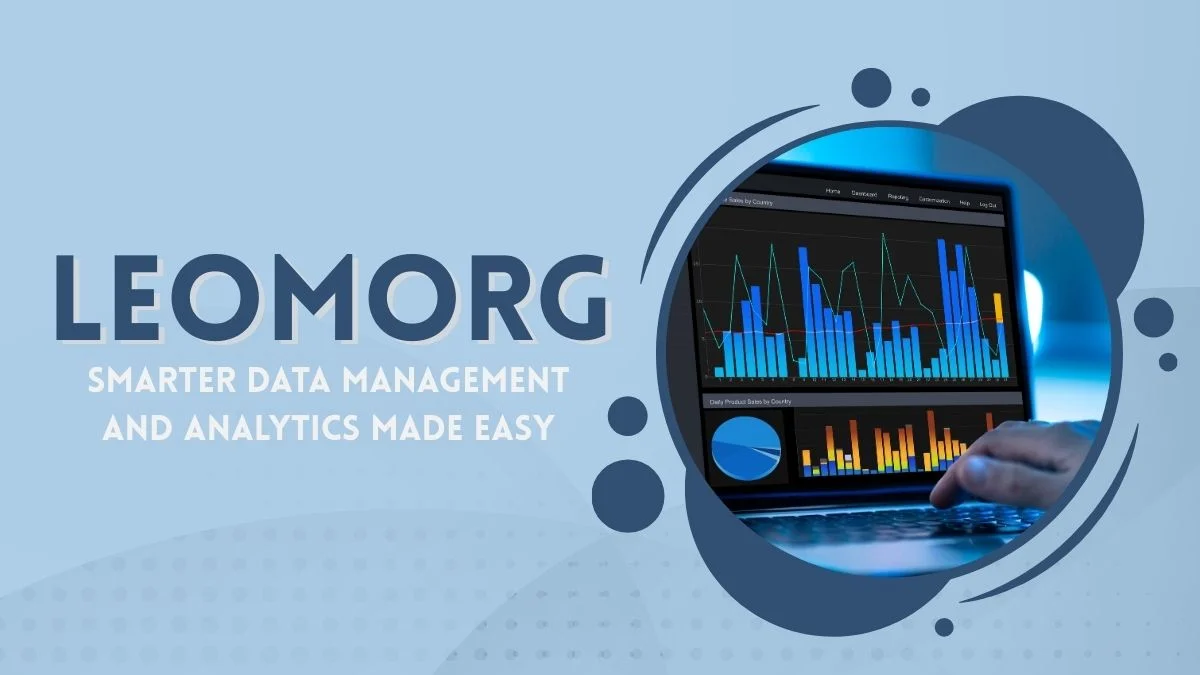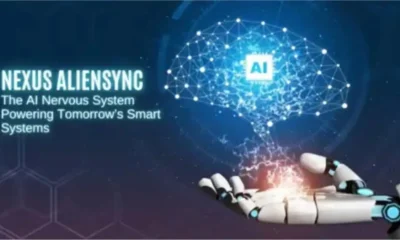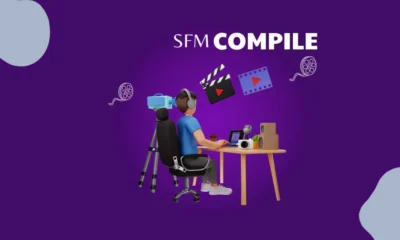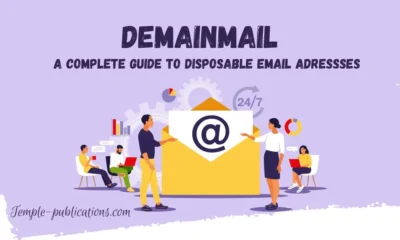TECHNOLOGY
LeoMorg: Smarter Data Management and Analytics Made Easy

In today’s hyper-connected digital world, data has become the backbone of decision-making across industries. Whether in healthcare, marketing, finance, or retail, organizations depend on reliable tools to collect, organize, and analyze vast amounts of information. One such groundbreaking solution is LeoMorg, a powerful data management and analytics platform designed to simplify complex datasets and convert them into actionable insights.
What is LeoMorg?
LeoMorg is a next-generation data management and analytics tool that streamlines the process of handling large and complex datasets. Its mission is simple yet profound: to empower individuals and organizations to understand their data and make better decisions. Unlike traditional platforms that require steep learning curves or advanced technical expertise, big data solutions prioritize user-friendliness and accessibility.
- Data Collection: Seamlessly integrates with multiple sources, from spreadsheets and CRMs to cloud-based applications and IoT devices.
- Data Organization: Structures messy, unstructured information into clean, usable formats.
- Data Analysis: Uses statistical, predictive, and machine learning models to uncover trends and patterns.
Why Data Management Matters Today
The volume of data generated worldwide is increasing at an unprecedented pace. According to industry reports, the total amount of data created, captured, and consumed globally is projected to exceed 180 zettabytes by 2025. Without proper tools, this massive information pool can quickly become overwhelming and unmanageable. Businesses that fail to harness their data risk falling behind competitors who can leverage it for innovation, efficiency, and customer engagement.
Key Benefits of LeoMorg
- Simplified Data Workflows: Combines collection, organization, analysis, and visualization into one seamless platform.
- Real-Time Insights: Enables instant data analysis for faster, smarter decision-making.
- Cost Efficiency: Reduces the need for multiple tools and manual reporting, saving time and resources.
- User-Friendly Interface: Accessible to both technical and non-technical users through an intuitive design.
- Scalability: Adapts to small businesses and large enterprises, supporting growing data needs.
Core Features of LeoMorg
1. Intuitive User Interface
It is built with accessibility in mind. Its drag-and-drop interface eliminates the need for complex coding, making it suitable for professionals with varying technical backgrounds.
2. Scalable Data Processing
From small datasets to enterprise-level big data, business intelligence software can scale seamlessly. This scalability ensures that organizations can grow without worrying about outgrowing their analytics platform.
3. Real-Time Analytics
One of the business intelligence software’s standout features is its ability to process and analyze data in real time. Businesses can monitor customer behavior, track operational efficiency, and respond quickly to emerging opportunities or risks.
4. Advanced Machine Learning Integration
LeoMorg incorporates machine learning models to enable predictive analytics. This helps businesses forecast trends, anticipate customer needs, and implement proactive strategies.
Why LeoMorg Stands Out from Competitors
- Ease of Use: Unlike many enterprise tools that require extensive training, big data solutions empower non-technical users.
- Scalability: From startups to large corporations, business intelligence software adapts to different organizational needs.
- Comprehensive Approach: It combines collection, organization, analysis, and visualization into one platform.
- Trustworthiness: With compliance certifications and strong security protocols, business intelligence software ensures data safety.

Industry Applications of LeoMorg
- Healthcare: Tracks patient outcomes, supports clinical research, and improves hospital operations.
- Marketing: Enables customer segmentation, campaign tracking, and sentiment analysis.
- Retail: Optimizes inventory, forecasts demand, and personalizes customer experiences.
- Finance: Detects fraud, assesses risk, and forecasts market trends.
- Education: Monitors student performance, enhances learning experiences, and supports research.
How LeoMorg Supports Data-Driven Culture
A data-driven culture is essential for modern organizations. LeoMorg fosters this by making analytics accessible across all levels of the business. Executives, managers, and frontline employees can interact with data in meaningful ways, encouraging collaboration and innovation. Moreover, business intelligence software visualization tools make data storytelling easier. Instead of drowning stakeholders in spreadsheets, leaders can present compelling narratives backed by visuals and facts.
Challenges in Data Management and How LeoMorg Solves Them
Common Challenges:
- Data Silos: Information locked in separate systems.
- Unstructured Data: Inconsistent formats make analysis difficult.
- Skill Gaps: Not all employees have technical expertise.
- Time-Consuming Processes: Manual reporting slows decision-making.
LeoMorg’s Solutions:
- Integration Features break down silos by pulling data from multiple platforms.
- Automated Structuring Tools clean and organize raw data.
- User-Friendly Interface bridges skill gaps.
- Real-Time Reporting accelerates strategic actions.
The Future of Data Analytics with LeoMorg
The future of data analytics lies in intelligent, scalable, and user-friendly platforms like LeoMorg. By integrating advanced AI, predictive modeling, and real-time processing, business intelligence software empowers organizations to move beyond reactive decisions toward proactive strategies. Its adaptability to emerging technologies ensures businesses remain competitive, innovative, and data-driven, making business intelligence software a vital tool in shaping tomorrow’s digital economy.
FAQs
Q1. What makes LeoMorg different from other data analytics tools?
It combines ease of use, scalability, and advanced machine learning integration in a single platform, making it accessible to both technical and non-technical users.
Q2. Can small businesses use LeoMorg?
Yes. It is highly scalable, making it suitable for startups, SMEs, and large enterprises alike.
Q3. Does LeoMorg support real-time analytics?
It provides real-time insights that help organizations respond instantly to market changes and customer needs.
Conclusion
The digital era demands tools that can transform overwhelming volumes of data into actionable strategies. LeoMorg rises to this challenge, offering an all-in-one solution for data collection, organization, analysis, and visualization. Its adaptability across industries, from healthcare to finance, makes it a versatile choice for organizations striving to unlock the full potential of their data.
-

 BIOGRAPHY7 months ago
BIOGRAPHY7 months agoBehind the Scenes with Sandra Orlow: An Exclusive Interview
-

 HOME1 year ago
HOME1 year agoDiscovering Insights: A Deep Dive into the //vital-mag.net blog
-

 HOME1 year ago
HOME1 year agoSifangds in Action: Real-Life Applications and Success Stories
-

 BIOGRAPHY1 year ago
BIOGRAPHY1 year agoThe Woman Behind the Comedian: Meet Andrew Santino Wife




























